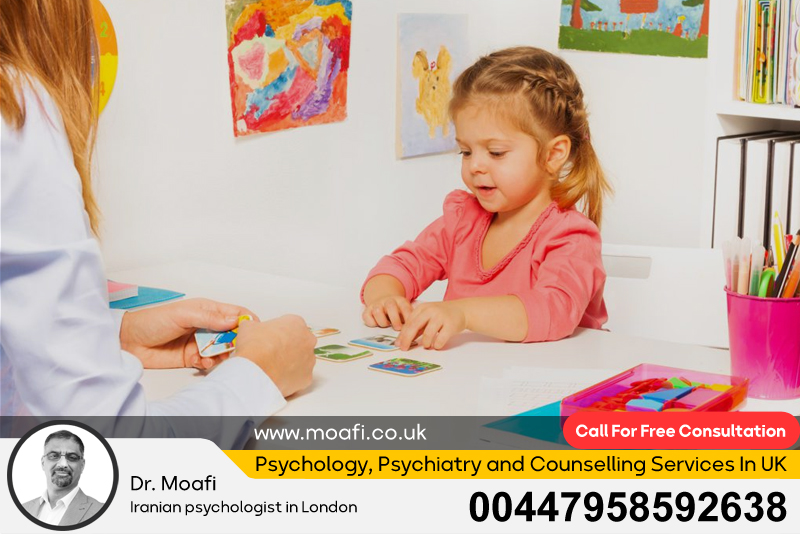Autism Assessment for Girls in London
Autism spectrum disorder (ASD) has traditionally been recognized and diagnosed more frequently in boys than in girls, leading to an underrepresentation of females in clinical studies and assessments. This discrepancy is particularly concerning given that girls often exhibit different symptoms than boys, resulting in underdiagnosis or misdiagnosis. Recent insights indicate that girls with autism may employ sophisticated social masking techniques, which can obscure their difficulties. Consequently, there is an urgent need for tailored autism assessments that address the unique behavioral expressions and challenges faced by girls.
In London, several specialists are increasingly focusing on autism assessments specifically designed for females. These assessments take into consideration the subtler presentation of symptoms often seen in girls, such as heightened anxiety, social withdrawal, and depression, and the potential for better-developed verbal skills. Professionals in this field are employing a comprehensive approach that includes not just standardized tools, but also qualitative assessments that can capture the nuanced ways in which autism presents in girls. This shift fosters an environment where females can receive accurate diagnoses and appropriate support at an earlier stage in life.
The implications of providing girls with proper autism assessments in London are profound. Accurate diagnosis is crucial for implementing effective interventions that can significantly improve quality of life. With the right support, girls on the autism spectrum can navigate educational challenges, develop social skills, and cultivate strengths that may otherwise be overlooked. Moreover, a more thorough understanding of female autism can lead to better educational policies and resources tailored specifically to meet the needs of girls, thus ensuring they are not left behind.
Ensuring that the assessment process is sensitive and inclusive can also foster a sense of acceptance among families. When parents understand the specific traits and challenges associated with female autism, they can better advocate for appropriate resources and support systems in schools and communities. This recognition can also enable girls to embrace their identities and seek help without stigma. In conclusion, enhancing autism assessments tailored for girls in London is not only beneficial for the individuals diagnosed, but it also paves the way for a broader understanding of autism that can influence societal perceptions, academic expectations, and developmental support for females on the spectrum.

Dr. Alireza Moafi: Autism Assessment for Girls in London
Dr. Alireza Moafi is recognized in London for his specialized approach to autism assessments, particularly for girls. With a keen understanding of the unique challenges and characteristics associated with female autism, Dr. Moafi employs an evidence-based methodology that emphasizes an individualized assessment experience. His practice is informed by the latest research and a commitment to recognizing the often-overlooked signs of autism in females. This focus is critical in a world where the diagnostic criteria have largely been shaped around male presentations of autism.
Dr. Moafi’s assessments typically involve a multi-faceted approach, where he combines clinical interviews, standardized assessment tools, and direct observations. These evaluations allow him to elucidate the specific needs and strengths of each girl, ensuring that the assessment accurately reflects her capabilities and challenges. By maintaining a compassionate and empathetic environment throughout the assessment process, Dr. Moafi helps girls feel comfortable and understood, which is particularly important for those who may struggle with social interactions.
One aspect of Dr. Moafi’s work that stands out is his advocacy for increasing awareness and understanding of female autism in both clinical settings and the community. He frequently engages in educational outreach, collaborating with schools and parent groups to provide informational sessions that clarify the unique ways autism may manifest in girls. His dedication to demystifying autism not only aids in timely diagnosis but also promotes an inclusive attitude among peers and educators, making it easier for girls to thrive in their social and academic landscapes.
Additionally, Dr. Moafi emphasizes the importance of ongoing support following diagnosis. His approach often includes recommendations for tailored therapeutic interventions and resources that are sensitive to the specific experiences of girls on the spectrum. Whether through individual therapies, social skills groups, or family support initiatives, Dr. Moafi ensures that the path towards understanding and support continues beyond the assessment phase. This holistic view of autism assessment for girls in London reflects a growing recognition of the diverse presentations of autism, ultimately leading to enhanced opportunities for young females to succeed and flourish.
In conclusion, Dr. Alireza Moafi significantly contributes to the landscape of autism assessments in London through his specialized focus on girls. His commitment to recognizing and supporting females on the spectrum not only helps in acknowledging their unique challenges but also fosters an environment where they can gain the confidence and tools necessary to navigate their journeys. Through his work, he is helping to reshape the dialogue around autism, ensuring that females are seen, heard, and understood in a society that can often overlook their experiences.

Autism for Girls
Autism spectrum disorder (ASD) is a complex neurodevelopmental condition that manifests differently across individuals, with distinct patterns often observed between genders. While autism has been historically perceived as a disorder predominantly affecting boys, increasing research highlights that girls can exhibit unique signs and symptoms, which may lead to underdiagnosis or late diagnosis. Understanding autism in girls is critical to ensure they receive the appropriate support and interventions they need to thrive.
One of the primary challenges in diagnosing autism in girls is the tendency for females to develop more advanced social skills at an early age, allowing them to mask their difficulties. Many girls may mimic social behaviors and conform to social norms, which can obscure their underlying challenges. This capability for social masking can result in a delay in diagnosis and often means that girls may go undetected into adulthood. Additionally, the way girls may express their interests and behaviors can differ significantly from their male counterparts. For example, girls might engage intensely with socialized interests such as animals, celebrities, or specific hobbies, while boys might display a preference for more mechanical or systemized pursuits.
Moreover, girls with autism are often more prone to anxiety and related issues compared to boys. They may find it difficult to navigate friendships, leading to feelings of isolation or social withdrawal. This increased social pressure can lead to co-occurring mental health issues, such as depression or generalized anxiety disorders, which can further complicate the identification of autism and may overshadow core symptoms.
Recognizing autism in girls also necessitates an understanding of the broader social context in which they live. Societal expectations and gender norms can influence how girls behave and are perceived. Cultural pressures often dictate that girls should be nurturing, empathetic, and socially adept, which further complicates the diagnostic landscape for those on the spectrum. As awareness of the unique characteristics of autism in girls grows, so too does the need for tailored assessment tools and support services that accurately reflect their experiences.
In conclusion, understanding autism in girls is essential for accurate diagnosis and effective intervention. Recognizing the different manifestations of autism in females is vital for ensuring they receive the support they deserve. As research continues to illuminate the nuances of female autism, it is crucial for clinicians, educators, and families to approach assessments with a gender-sensitive lens, fostering an inclusive environment where girls can flourish.

Signs and Symptoms of Autism Spectrum Disorder in Girls
The signs and symptoms of autism spectrum disorder (ASD) can differ significantly between boys and girls, often leading to confusion and misdiagnosis in females. Recognizing these differences is key to accurate identification and timely intervention. While many symptoms overlap regardless of gender, distinctive patterns often emerge in girls that require nuanced understanding and attention.
One of the hallmark features of autism, regardless of gender, is difficulty with social communication and interaction. However, girls with autism may display these challenges differently. They may experience difficulties in establishing and maintaining friendships, often struggling with nuanced social cues and expressions. Instead of overtly rejecting social interactions, girls are more likely to experience social anxiety and internalize their feelings, which can mask their struggles. This internalization often leads to increased stress and anxiety, making it essential for caregivers and clinicians to demystify these social challenges.
Repetitive behaviors are another core symptom of autism. While boys may exhibit more pronounced repetitive movements or fixations, girls might engage in more socially acceptable forms of repetitive behavior. For example, a girl may obsess over certain hobbies or interests and may pursue them with intensity while appearing socially engaged. This can lead to misconceptions about the absence of autistic traits, as these interests often remain within societal norms. Additionally, girls may prefer imaginative play and storytelling over more mechanical interests typically seen in boys, further complicating the recognition of autism.
Sensory sensitivities also play a significant role in the presentation of autism in girls. Many females on the spectrum may experience heightened sensitivities to sounds, textures, and visual stimuli, leading to overwhelmed feelings in busy environments. This sensory overload can result in behavioral outbursts or withdrawal, and it is frequently misattributed to other emotional or behavioral problems, rather than understood as a manifestation of autism.
Furthermore, emotional regulation can be a significant area of difficulty for girls with autism. They may struggle with managing intense emotions and may experience meltdowns or shutdowns when overwhelmed. However, these episodes can often be misinterpreted as poor behavior or lack of self-control, rather than a reflection of the difficulties associated with autism.
In summary, recognizing the signs and symptoms of autism spectrum disorder in girls entails understanding their unique presentation and the subtleties that may set them apart from boys. By acknowledging these differences, clinicians, educators, and families can work together to ensure that girls receive appropriate evaluations and interventions, fostering their development and overall well-being. Increased awareness and education about the distinct characteristics of female autism are crucial for promoting early diagnosis and effective support, ultimately helping girls on the spectrum thrive.

What is Autism in Girls?
Autism spectrum disorder (ASD) is a complex neurodevelopmental condition that affects individuals’ ability to communicate, interact socially, and engage in repetitive behaviors or interests. While ASD is often diagnosed in childhood, its symptoms can vary significantly between individuals, and the presentation can differ by gender. Understanding autism in girls is crucial for accurate assessment and intervention since girls frequently display different traits than boys.
Girls with autism may have a distinctive profile that reflects both their neurological makeup and societal expectations. While many of the core characteristics of autism—such as difficulties with communication and social interaction—are present, they often manifest differently in females. For instance, girls may be more skilled at social imitation and masking their symptoms, allowing them to blend into peer groups without revealing their struggles. This capability can result in girls being overlooked or misdiagnosed, as they may not fit the traditional mold of “autistic behavior” that has been predominantly observed in boys.
Moreover, girls may develop pronounced interests in subjects or activities that are considered socially acceptable, which can further complicate the identification of autism. For example, a girl might show an intense fascination with animals or fashion, which can mask more atypical behaviors that might otherwise signal autism. Consequently, these interests may be interpreted as benign and might overshadow the complexity of their social challenges.
The emotional landscape for girls on the spectrum is another critical aspect to consider. Girls with autism are frequently more susceptible to anxiety and depression, which can stem from their difficulties in social contexts, combined with the pressure to conform to societal norms. The internalized stress associated with navigating social situations can lead to co-occurring mental health issues that complicate the autism diagnosis and limit access to appropriate resources.
Furthermore, the presentation of autism in girls can evolve as they grow older. As they enter adolescence, they may experience heightened pressure to socialize, leading to increased stress and anxiety-related symptoms. It is essential for parents, educators, and healthcare professionals to be aware of how autism manifests and evolves in girls, enabling enhanced support and intervention strategies tailored to their specific experiences.
In summary, autism in girls involves a unique set of characteristics that often diverge from male presentations. By recognizing these differences, we can work towards more accurate diagnoses and effective interventions that allow girls with autism to thrive in their social, academic, and personal lives.
What Causes Autism in Girls?
The causes of autism spectrum disorder (ASD) remain a complex interplay of genetic and environmental factors. While the specific etiology of autism is not entirely understood, research suggests that genetic influences are significant contributors, accounting for a substantial proportion of the risk of developing the disorder. Understanding these causes in the context of girls with autism adds another layer of complexity, as there may be gender-specific factors that contribute to its development.
Genetic factors play a crucial role in autism; multiple genes are believed to influence brain development and function. Families with a history of autism are at a higher risk of having children with ASD, indicating that inherited genetic variables significantly contribute to the likelihood of developing autism. Research has identified numerous genes associated with autism, suggesting that it is a complex genetic condition rather than linked to a single gene. Interestingly, studies have also indicated that girls may require a more significant genetic “load” to be diagnosed with autism, meaning they might need more genetic variations or mutations than boys to express the traits associated with the disorder.
Environmental factors also contribute to the risk of autism. Prenatal factors, such as maternal infections during pregnancy, advanced parental age, and exposure to environmental toxins, have been studied for their potential links to ASD. Some studies suggest that complications during pregnancy and birth may increase the risks of developing autism, particularly if combined with genetic predispositions. Understanding how these environmental influences interact with genetic vulnerabilities adds valuable insights into the causes of autism in girls.
Additionally, hormonal influences may play a role in the presentation and expression of autism in females. Estrogen, for instance, is thought to have neuroprotective effects that might influence cognitive and social development. Research suggests that hormonal differences could contribute to the varying presentations of autism in girls compared to boys, leading to milder symptoms or different coping mechanisms.
In conclusion, the causes of autism in girls are multifaceted, combining genetic, environmental, and possibly hormonal factors. Continued research is essential to unravel these complex interactions and to understand why autism manifests differently in females compared to males. By advancing our knowledge of the underlying causes of autism, we can improve diagnostic processes and tailor interventions to meet the specific needs of girls on the autism spectrum, ultimately helping them achieve their fullest potential.

Treatment of Autism in Girls
The treatment of autism in girls requires a nuanced and individualized approach, recognizing the unique ways in which women experience and express their symptoms. Effective treatment plans generally encompass a combination of therapies, educational interventions, and support systems tailored to each girl’s specific needs. As understanding and awareness of autism in girls improve, so do the strategies developed to help them navigate their daily challenges.
One primary avenue of treatment is behavioral therapy, particularly applied behavior analysis (ABA), which focuses on reinforcing positive behaviors and teaching new skills. For girls on the spectrum, ABA can be adapted to address social communication skills, emotional regulation, and the development of coping strategies. Because girls may experience significant social pressures, social skills training is often a vital part of their treatment plan. This training can include role-playing social scenarios, understanding nonverbal cues, and learning how to facilitate friendships and interactions, all crucial for improving their confidence and social abilities.
In addition to behavioral therapies, cognitive-behavioral therapy (CBT) is particularly beneficial for addressing anxiety, which is prevalent among girls with autism. CBT can help girls identify negative thought patterns and develop healthier coping mechanisms, fostering resilience and stress management techniques. Therapies that focus on social-emotional learning can also be impactful, equipping girls with skills to enhance their emotional intelligence and interpersonal relationships.
Educational interventions play a crucial role as well. Individualized Education Plans (IEPs) can ensure that girls receive the support they need within school environments. This may include accommodations such as modified curricula, access to occupational therapy, and personalized support from skilled educators and specialists. Creating an inclusive classroom environment where girls feel safe and understood is essential for their academic success and social wellbeing.
Family involvement is also a key component of effective treatment. Parents and caregivers should be educated about the dynamics of autism, especially as it pertains to girls, to foster a supportive home environment. Family therapy may also be helpful, as it allows family members to communicate openly, address tensions, and develop strategies to support their child.
Lastly, peer support groups can be beneficial for girls with autism, connecting them with others who share similar experiences. These groups provide a platform for sharing stories and challenges, reducing feelings of isolation.
In summary, the treatment of autism in girls should be holistic and tailored to their unique needs. With evidence-based therapies, educational support, and community involvement, girls can develop the skills necessary to navigate their world confidently and effectively.

Autism in Girls: Symptoms, Causes, Types, and Testing
Autism spectrum disorder (ASD) exhibits a diverse range of symptoms, causes, and types, meaning that each individual’s experience is unique. In girls, recognizing these variations is crucial for timely diagnosis and effective intervention. Understanding autism in girls entails exploring the specific symptoms they may exhibit, the potential causes of the disorder, the types of autism recognized in clinical practice, and the testing methods used to diagnose the condition.
Symptoms of autism in girls can often differ from those in boys. While both genders may face challenges in communication, social interactions, and behavior, girls may present with subtler signs. Common symptoms in girls include difficulty making and maintaining friendships, social anxiety, and an inclination towards internalizing emotions. They often engage in social masking, mimicking peers to blend in, which can hinder diagnosis. Repetitive behaviors may manifest less overtly, as girls might indulge in intense interests that align with social norms, such as fashion or animals, rather than more pronounced and stereotypical behaviors commonly seen in boys.
The causes of autism in girls are multifaceted. Genetic factors are thought to play a significant role, with variations in multiple genes influencing neurodevelopment. Studies have also suggested that girls may have a higher threshold for expressing autism traits, requiring more significant genetic predispositions to develop noticeable symptoms. Environmental factors, such as prenatal exposure to toxins or maternal health during pregnancy, may contribute to autism’s onset. The influence of hormones, particularly estrogen, is also under investigation, as it appears to interact with genetic and environmental factors to shape the development of girls with autism.
There are different types of autism, each characterized by varying degrees of symptoms and challenges. The diagnostic criteria include several categories, such as autism, Asperger’s syndrome, and pervasive developmental disorder. Girls may often be diagnosed with a more nuanced presentation known as high-functioning autism or social communication disorder. These categories reflect the spectrum quality of autism, highlighting the necessity for personalized approaches to treatment.
Testing for autism in girls typically involves a comprehensive evaluation process. Clinicians may use standardized assessment tools, such as the Autism Diagnostic Observation Schedule (ADOS) and the Autism Diagnostic Interview-Revised (ADI-R), supplemented with clinical interviews and behavioral observations. Gathering input from parents, teachers, and other caregivers is also crucial in forming a complete picture of the child’s functional abilities and challenges.
In conclusion, autism in girls is characterized by a unique set of symptoms, underlying causes, types, and testing methods. Recognizing these intricacies is vital for achieving accurate diagnoses and implementing effective strategies that support girls with autism in leading fulfilling lives. Through continued research and advocacy, we can enhance understanding and acceptance, ultimately improving outcomes for girls on the spectrum.
Dr. Alireza Moafi Will Help You Treat Autism in Girls
Dr. Alireza Moafi is a renowned specialist dedicated to understanding and treating autism, particularly in girls. With a focus on their unique experiences and challenges, Dr. Moafi employs a comprehensive approach that combines evidence-based therapies with personalized support strategies. His commitment to empowering girls with autism has made a significant impact on their lives, facilitating improved outcomes and enriching their quality of life.
One of the core tenets of Dr. Moafi’s approach is recognizing that girls on the autism spectrum often present with symptoms that differ from those observed in boys. With specialized expertise, he thoroughly assesses each girl’s needs, tailoring treatment plans to address her specific challenges and strengths. This individualized approach includes a combination of behavioral therapies, social skills training, and emotional support aimed at promoting both cognitive and emotional development.
Dr. Moafi’s emphasis on early intervention plays a vital role in effective treatment. Research shows that when autism is identified and addressed early, children can make remarkable progress in social, emotional, and academic domains. By utilizing tools such as the Autism Diagnostic Observation Schedule (ADOS) and engaging with parents and teachers, Dr. Moafi gathers a holistic view of the child’s abilities and areas for growth. This thorough evaluation process allows for accurate diagnosis and the subsequent implementation of targeted therapies designed to improve communication skills, social interactions, and emotional regulation.
In addition to behavioral therapies, Dr. Moafi recognizes the importance of family involvement in the therapeutic process. By providing guidance, education, and support to families, he helps create a nurturing environment where girls can thrive. He encourages parents to be active participants in their child’s treatment, empowering them to advocate effectively within educational and social systems.
Moreover, Dr. Moafi prioritizes a warm and supportive environment, ensuring that girls feel safe and understood during their treatment. By fostering a positive therapeutic relationship, he helps reduce anxiety and create a space for open communication, allowing girls to share their thoughts and feelings more freely.
In summary, Dr. Alireza Moafi’s expertise in treating autism in girls offers a beacon of hope for families navigating the complexities of autism. His commitment to individualized care, early intervention, and family involvement positions girls for success both now and in the future.
Free Consultation for Girls with Autism
Recognizing the critical need for accessible support and resources, Dr. Alireza Moafi is offering free consultations for girls diagnosed with autism. This initiative aims to provide families with expert guidance and an opportunity to discuss their child’s unique needs in a supportive environment. By eliminating financial barriers, Dr. Moafi hopes to ensure that families have access to essential services and knowledge that can profoundly affect the lives of girls on the autism spectrum.
During the free consultation, parents and caregivers can meet with Dr. Moafi to explore a wide range of topics related to autism. From understanding the diagnostic process to discussing potential treatment options, these consultations provide invaluable insights tailored to each girl’s individual circumstances. This initial meeting allows families to express their concerns, ask questions, and gain a clearer understanding of the complexities associated with autism in girls.
One of the primary benefits of the free consultation is the opportunity for personalized assessment. Dr. Moafi utilizes these sessions to obtain preliminary information about the child’s behaviors, challenges, and strengths, which informs subsequent diagnostic evaluations. Understanding that each girl’s experience is distinct, this initial consultation serves as a foundation for developing an individualized treatment plan that reflects her unique needs.
Additionally, the consultation can shed light on the resources available to families. Dr. Moafi is committed to connecting parents with valuable support networks, including community services, educational resources, and therapeutic options. By linking families to these resources, he fosters an environment of empowerment, enabling them to advocate effectively for their child’s needs.
Moreover, the free consultation highlights Dr. Moafi’s dedication to raising awareness about autism in girls. By engaging in community outreach, he aims to promote understanding and acceptance, helping to dismantle the stigma often associated with autism. His efforts underscore the importance of clear communication around the unique experiences of girls on the spectrum, encouraging broader recognition of their needs.
In conclusion, the free consultation offered by Dr. Alireza Moafi represents a valuable opportunity for families navigating the challenges of autism in girls. By providing expert guidance, personalized assessment, and connections to essential resources, this initiative is designed to empower families and pave the way for improved outcomes for girls on the autism spectrum.



